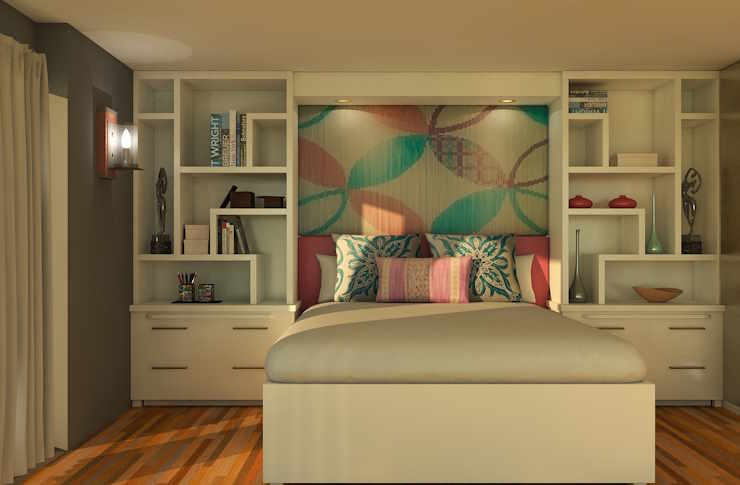Acoustic and lighting strategies to minimize nighttime disturbances
Practical acoustic and lighting strategies can reduce nighttime disturbances and improve overall sleep quality. This article outlines actionable steps—from sound absorption and layout adjustments to targeted lighting setups—that work with decor, ventilation, and ergonomics to create a calmer sleep environment.

Creating a bedroom that minimizes nighttime disturbances requires attention to both sound and light as well as complementary elements such as layout, materials, and climate control. Small changes in acoustics and lighting, combined with thoughtful choices in mattress, pillows, textiles, and furniture organization, can reduce interruptions and support more consistent rest without major renovations.
This article is for informational purposes only and should not be considered medical advice. Please consult a qualified healthcare professional for personalized guidance and treatment.
How do acoustics affect sleep?
Sound interruptions trigger awakenings and reduce sleep depth. Addressing acoustics means reducing reverberation and blocking or masking disruptive noises. Layer soft surfaces—rugs, heavy curtains, upholstered headboards, and wall-mounted fabric panels—to absorb mid- and high-frequency sounds. Consider sealing gaps around windows and doors to limit drafts and sound leaks. For persistent external noise, a combination of denser window treatments, secondary glazing, or an acoustic door sweep can be effective. Where full soundproofing isn’t practical, use gentle background sound like a white-noise machine or fan to mask peaks and stabilize the auditory environment.
How can lighting improve nighttime rest?
Lighting influences circadian rhythms and the ease of falling asleep. Reduce exposure to bright, cool-toned light in the hour or two before bed by switching to warmer bulbs and lowering overall illuminance. Install dimmers or use lamps with adjustable color temperature to shift from daylight-like lighting during evening routines to amber-rich light at bedtime. Blackout curtains or shades block streetlights and early morning sun; combine them with low-level path lighting for safe movement without fully waking the brain. Motion-activated lights with warm tones can protect sleep when bathroom visits are needed.
What decor, color, and textiles help?
Decor choices affect both sound absorption and perceived calm. Opt for muted, warm colors to reduce visual stimulation—soft blues, warm grays, and earthy tones can be soothing. Textiles play a dual role: thick curtains, layered bedding, and area rugs soften noise and add thermal comfort. Choose breathable materials like cotton or linen for sheets and natural fibers for rugs and throws to maintain comfort with good airflow. Keep decorative clutter minimal to avoid visual busyness; organized surfaces create a calmer atmosphere that supports uninterrupted rest.
How should mattress, pillows, and ergonomics be chosen?
A supportive mattress and appropriate pillows reduce nighttime discomfort and position-related awakenings. Match mattress firmness to your preferred sleep position and body weight to maintain spinal alignment; use pillows that support neck alignment and consider additional lumbar support if needed. Ergonomics extends to bed height, headboard design, and bedside layout—ensure switches and nightlights are reachable without straining. Proper sleep posture lessens tossing and turning, which reduces noise from friction with bedding and limits disturbances for a partner.
How to use layout, furniture, and storage for quiet?
Room layout and organization can lessen noise and interruptions. Position the bed away from shared walls that face noisy corridors or streets when possible. Use furniture like bookshelves or wardrobes as additional sound buffers on noise-exposed walls. Keep frequently used items in accessible storage to avoid rummaging through drawers at night; soft-close hardware reduces clatter. An organized bedside setup—minimal, with essentials within reach—prevents unnecessary movement. Consider moving louder devices (alarms, chargers) away from adjacent shared walls and set electronic notifications to silent or Do Not Disturb at night.
What about ventilation and climate control?
Comfortable temperature and airflow are essential to uninterrupted sleep. Aim for a cool, stable bedroom climate; the optimal range varies by person but generally falls between 15–19°C (59–66°F). Ensure ventilation systems run quietly—use insulated ducting or quiet fans if mechanical noise is an issue. If a fan is used for cooling, its steady sound can also serve as masking noise. Avoid noisy window units; when air conditioning or heating is necessary, look for models rated for low operational sound or place them where they are less likely to transmit vibration to the bed.
Conclusion Reducing nighttime disturbances combines acoustic treatments, considerate lighting, ergonomic bedding choices, and smart layout and storage strategies. Integrating textiles, color, and ventilation choices supports both sensory comfort and sleep physiology. By layering modest adjustments rather than relying on a single solution, it’s possible to create a quieter, darker, and more restful bedroom environment that helps sustain deeper sleep.





